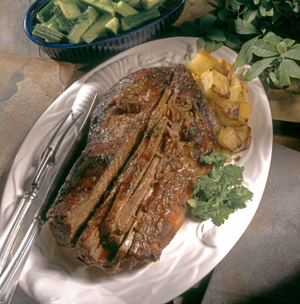Witches, fairies, monsters, and ogresses-it shouldn’t take long to realize that many elements of fairy tales and nursery rhymes are heavily entrenched in myths and folklore. Enter the feminine evil. In the article Charles Perrault: Fairy Tale Morals and Men, the role of the weak male character, together with the glut of twisted morals these bedtime stories offer is discussed. This article points out the character of the female stereotype, on the other hand, and discusses the morals offered up by other beloved fairy tale classics aside from those in Charles Perrault’s portfolio (which includes Cinderella).
Somewhere between cultures and folklore, women are often portrayed as Adam’s conniving, duplicitous half. And so, too, does she play her part ever faithfully across the imagination of children. Evil witches, wicked stepmothers, bad fairies, ugly stepsisters-each is a vivid testament of the wretched female carried on to children’s lore. But stepmothers aren’t always wicked. Fairies aren’t always bad. Stepsisters aren’t always ugly. And women certainly aren’t always evil. Same goes that princes aren’t always charming, nor are peasants always courageous and heroic. Hence the irony that early on, children are educated with colorful storybooks that teach them to see the world in an objective black and white, in a rigid perspective that allows them to classify humanity into boxed labels. Thanks to stereotyping, this world will never get rid of Prince Charming.
Next up for the act are giants that devour little children and wives that feast on beautiful stepdaughters. And it’s delightful to know that everywhere, fairyland abounds with bloodthirsty cannibals: there’s the giant on top of the beanstalk that have Englishmen for a savory lunch, that witch who readies her cauldron to boil Hansel, the stepmother intent on owning Snow White’s beauty secrets by devouring her liver and lungs, and so on. Frankly, it shouldn’t be disturbing-or surprising-if children end up becoming deranged cannibals. We taught them early.
Cannibalistic acts may perhaps signify higher virtues, but cannibalism is exactly what it is-cannibalism. At its heart still lies the graphic depiction of primitive, crude savagery. And society calls itself civilized!
Still upon closer inspection, fairy tales and nursery rhymes lend themselves well to social taboos. Psychoanalysts, for example, pin down the seemingly innocuous Jack and Jill to incite sexual implications when Jack “falls down and breaks his crown” (i.e., loses his virginity). Not everyone buys that theory of course, but consider taking it along the literal level and Jack “losing his crown” would be a nasty (and gory) sight. So too with the three blind mice who get their tails cut off by the farmer’s wife, the blood isn’t letting up. And how about Rapunzel with her golden hair? Do you still actually believe that nothing unbecoming happens when Prince Charming and a lonely maiden are left alone up in a tower every night? Next, we can proceed to counting the number of cases of murder (attempted and successful alike) and death across the texts: one involves a poisoned apple, another a deadly spinning wheel, some call for innocent children thrown to die in the middle of a forest, and still others incite massacres of humans and pigs alike by hungry wolves. It just gets blatantly moronic when evil stepmothers who are in charge of contriving those seamlessly perfect murder plots simply fall over cliffs to their doom, all out of carelessness.
One indispensable element of fairy tales is, undeniably, instant wish fulfillment. You can only watch so many Disney movies without listening to Snow White chirping the tune to “Someday My Prince Will Come” or Cinderella in her rags, looking out to the glimmering castle in the distance and sobbing desperately to go to the ball. But they wouldn’t be fairy tales now if good fortune didn’t have Prince Charming and the fairy godmother come along now, would they? These stories teach children that life is all about wishes coming true, much like how the ugly duckling turns into a beautiful swan when it wished just that. It’s a dangerous perception bordering completely on the fantastic.
It’s the same twisted root that allows fairy tales to magically justify imps and knaves when they’re supposed to be the “good guys”. Did Puss in Boots do the world a favor when he made his master a wealthy man through a string of deceit and treachery? If we all had a cat like that! How about Jack who gets wrapped up in his greed and steals everything from the ogre on top of the beanstalk, including the ogre’s life? Is this justified amusement only because the ones wreaking havoc are the “good guys”? Stealing is good, as long as there’s a good reason for it-that’s exactly what we’re teaching the kids.
Beautiful literature, eh?
Ever been curious to know what the real deal was with the fairy tales we grew up loving? Behind the colorful, brightly illustrated and sanitized picture books brought out by the publishers onto ever modern household, there’s a dark, secret story that looms. Let’s analyze a few of the classics.
Jack and the Beanstalk
The biggest irony in this story: where are all the good guys?! The giant on top of the beanstalk finds Englishmen a tasty treat and that is definitely NOT good. But what about Jack? The innocent little boy first disobeys his mother by swapping their cow for magic beans, trespasses into the ogre’s abode, deceives the ogre’s wife into thinking he meant well, steals one of the ogre’s money bags, gets consumed by greed and decides to go back for the chicken that lays golden eggs, and tops it off by snatching the magical harp! Of course, there wouldn’t be a happy ending if he doesn’t get away from it all by cutting down the beanstalk to kill the ogre who’s only come after his stolen property. And Jack was supposed to be the good guy, right?
Little Red Riding Hood
Didn’t you find it even a tad bit suggestive when the wolf innocently asks the little girl what she’s got in there “under her apron”? In the earliest versions of the beloved tale, we encounter a cross-dressing wolf who asks Red Riding Hood to “undress herself” and “come lie down beside him”. If that isn’t tacky enough, let’s backtrack to all the action we missed before Red Riding Hood even came along: wolf gets to the cottage first, slays granny, dismembers her, stashes her body parts in one jar and drains her blood into another before neatly keeping them in the cupboard. Dressed as the old woman, the wolf then tells Red Riding Hood to help herself to some of the “meat” and “wine” in the cupboard, which she obediently does. It’s at least consoling that in this version, our heroine is smart enough to escape and not end up in the wolf’s belly. The rest of it must’ve scared the lights out of the Grimms.
Reference:
- “Charles Perrault: Fairy Tale Morals and Men”, found on Associated Content: www.associatedcontent.com


